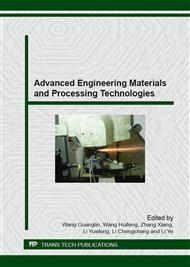p.54
p.62
p.68
p.75
p.82
p.88
p.95
p.102
p.108
Hilbert Curve Fractal Stacking in the Application of Path Planning in the Molten Molding
Abstract:
The scanning process of fused deposition modeling is realizing the fill of certain region, Therefore, reasonable scanning path planning directly affects the forming efficiency and the precision of the work piece. The method of Hilbert curve fractal scanning path which basing on the characteristics of both partition and parallel scanning is put forward basing on the analysis of the existing scanning mode. Application of improved curve filling method for complex curved surface forming planning, according to the characteristics of the Hilbert curve and Hamilton circuit, combined with the characteristics of the scanned level scan path trajectory planning, generate a continuous and comprehensive function value which the weight minimum scanning track under the premise of ensuring the quality of scanning. In order to avoid the generation of island type trajectory, setting a decimal for each loop can easily distinguish between each circuit, finally obtains the scan trajectory. The method can be used to generate scanning track continuous greatly reducing the spray head start and stop times and improves the processing efficiency of the whole, not only to meet the accuracy requirements and can generate non scanning path interference but also high forming efficiency.
Info:
Periodical:
Pages:
82-87
Citation:
Online since:
October 2015
Authors:
Keywords:
Price:
Сopyright:
© 2016 Trans Tech Publications Ltd. All Rights Reserved
Share:
Citation:


